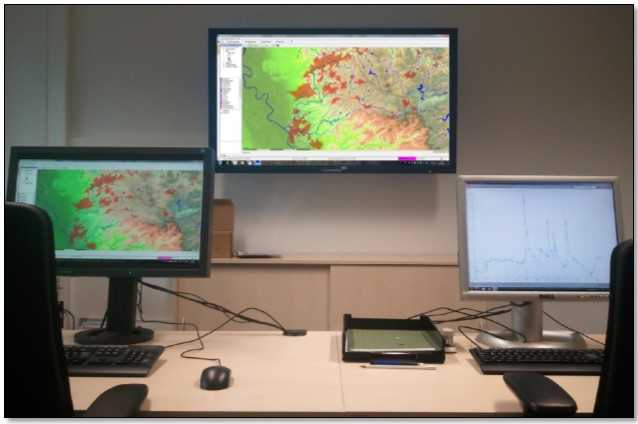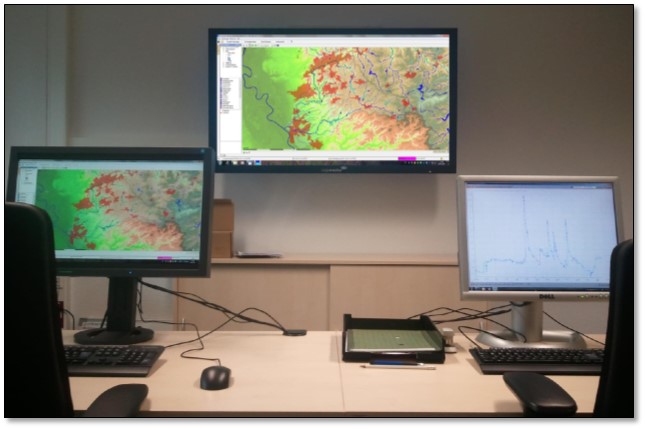General information
Client: Water associations Eifel-Rur and Wupperverband
Location: Düren, Wuppertal; Germany
Project duration: 12/2013 - 04/2016
Key characteristics: Early-warning system, real-time operation, Wupperverband, disaster risk management, catchment area of 2800 km²
Project description
The basin associations Wupperverband and WVER are self-governing, non-profit, statutory bodies, subject to North Rhine-Westphalia (Germany) state law. The members of the associations include cities, municipalities and counties located in the basin, companies, such as paper-producing enterprises.
The associations run their reservoir systems to provide domestic water, flood protection for 1 million people and operate the dams to augment river flow during dry spells. The downstream part of the Wupperverband system is one of the most densely populated areas in Europe and uncontrolled floods would cause tremendous damages. Low flow augmentation was the root for setting up the WVER reservoir system. Stable flow conditions enable the production of a wide variety of enterprises, firstly aforementioned paper-industry. Additionally, it ensures existence of wetlands and native river reaches.
The objective of the early warning systems was to enhance disaster risk management. Both systems require forecasts of precipitation to increase lead time for warning procedures and to adapt release rules accordingly.
The Wupperverband runs a precipitation-runoff and reservoir operation model based on Talsim-NG under the platform of FEWS (Deltares) whereas the WVER uses Talsim-NG in combination with FEWS (Deltares) as preferred solution for the operation control centre at the headquarter, but web-based SYDRO Services on-site at the dam sites.
The river basins comprise 12 dams with a total catchment area of 2800 km².
Services
- specification of requirements with respect to hydrology, dam operation and IT implementation
- consultation with the dam operator and with regulatory authorities
- development of an early warning system for floods and operation of reservoirs
- review of existing operation rules and adaption to higher dynamics of floods
- consulting water associations and reservoir operators on the implementation of release strategies into real-time operation
- set up precipitation-runoff models in real-time mode for short-term flood forecasts
- establishment of long-term predictions using stochastic methods to generate streamflow
- implementation of the hydrological model TalsimNG within the framework of FEWS and with the web-based SYDRO Services solution
Skills
- IT implementation
- hydrological modeling
- Scenario management

